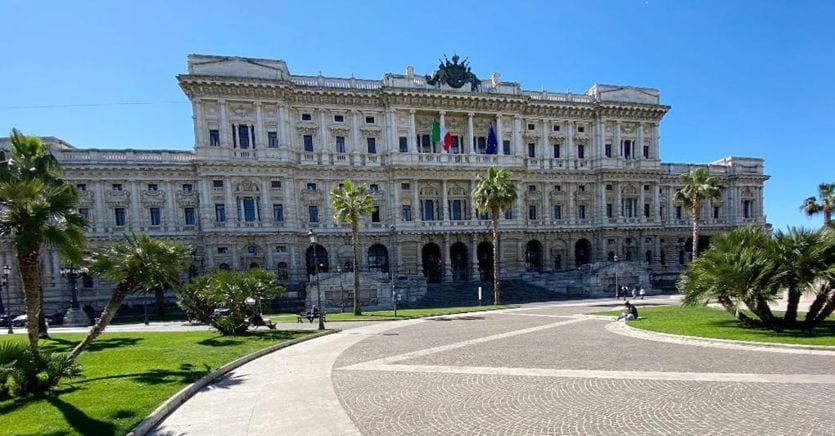On March 14, 1888, with Umberto I and Queen Margherita present, the first stone was laid for the Palace of Justice in Rome, the current palace of the Court of Cassation. The palace constitutes an important piece of the so-called Third Rome, or rather of that complex project of a political, urban and social order undertaken in the aftermath of 20 September 1870 in the new capital of the Kingdom of Italy: the goal was to modernize the city and, together, make manifest the positive impact of the Savoy government, in discontinuity and often to the detriment of the Catholic Church.
From the beginning that project relied on ministries or other large public construction sites. The Ministry of Finance and the Ministry of War date back to the seventies, which the powerful Quintino Sella had wanted, or rather imposed along the Via Pia, today’s Via Venti Settembre, halfway between the Quirinale and Termini Station. A short time later followed the Palazzo delle Esposizioni along via Nazionale and the Monument to Vittorio Emanuele II, or Vittoriano, set by the second competition on the north side of the Campidoglio.
Loading…
Recovery of the Renaissance
In stylistic terms, it is easy to see in these buildings the mechanism of the recovery of the Renaissance: strongly posed by Camillo Boito, the question of the “national style”, that is the official architectural and artistic style of the new united Italy, was resolved in a language that it was directly inspired by the architects of the fifteenth and sixteenth centuries, from Filippo Brunelleschi to Andrea Palladio, passing through Donato Bramante and Michelangelo Buonarroti.
In political-electoral terms, both the Vittoriano and the Palazzo di Giustizia can be read as expressions of the leaders of the historic left of government, in the first case by Agostino Depretis, in the second by Giuseppe Zanardelli. As Minister Keeper of Seals Zanardelli set the main coordinates in March 1882, in agreement with the mayor Luigi Pianciani: the headquarters were then established in the Prati di Castello, the facade overlooking the Tiber, the bridge and the great artery connecting the city center , which today bear the name of Umberto I and Zanardelli himself respectively. In this way the palace was also transformed into a monumental bridgehead to expand into a city quadrant which in the common notion was unofficially traced back to the authority of the popes, if only for the presence of the bulk of Castel Sant’Angelo and even beyond the Vatican.
Guglielmo Calderini
On 4 November 1887 the jury of the competition placed Guglielmo Calderini in first place, preferred to the Sicilian Giuseppe Basile. Calderini, professor of architecture at the University of Pisa, was then fifty years old: originally from Perugia, after graduating as an architect-engineer at the universities of Turin and Rome, he had faced his career as a designer openly, competing in numerous public tenders. and sometimes even being the winner. In any case, that of the courthouse remains the most important project of his career.
